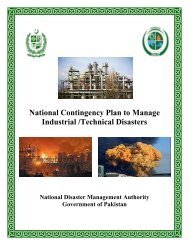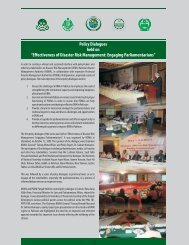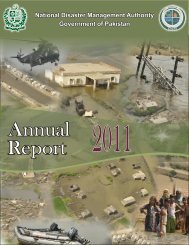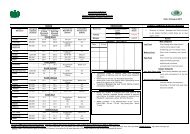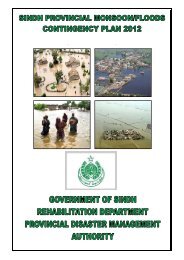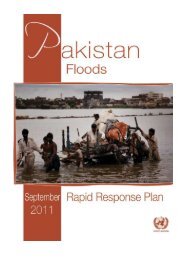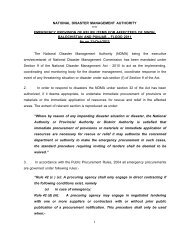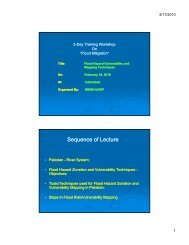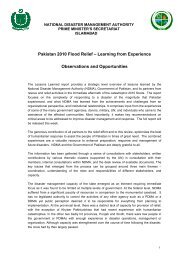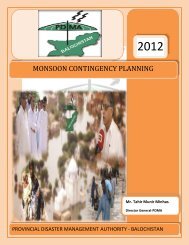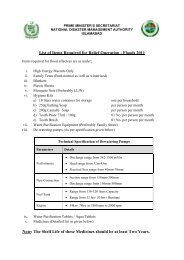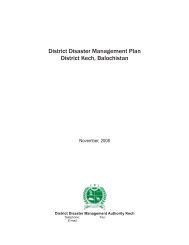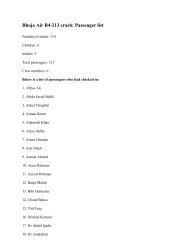National Disaster Response Plan (NDRP) March 2010 - NDMA
National Disaster Response Plan (NDRP) March 2010 - NDMA
National Disaster Response Plan (NDRP) March 2010 - NDMA
You also want an ePaper? Increase the reach of your titles
YUMPU automatically turns print PDFs into web optimized ePapers that Google loves.
70<br />
risks is essential. In emergency situations normally, water is treated with<br />
chlorine; chlorine purification tablets are commonly used to disinfect the water.<br />
Chlorine is the most common format of disinfecting water in emergency<br />
situation it is easy and cheap to use chlorine to disinfect water. It is important to<br />
put the right quantity of chlorine in the water otherwise chlorine may change<br />
taste of water with resultant public disinclination towards consuming the same.<br />
When water is disinfected with chlorine, it is important that the community<br />
should be educated about the quantity of chlorine per liter being used to<br />
disinfect the water 28 . The following standards in water supply in emergencies<br />
are used internationally in emergencies situation. These standards are adopted<br />
from The Sphere Project Minimum Standards in <strong>Disaster</strong> <strong>Response</strong>:<br />
(a) Water Supply Standard 1 - Access and Water Quantity. All people<br />
have safe and equitable access to sufficient quantity of water for<br />
drinking, cooking, personal and domestic hygiene, Public water points<br />
are sufficiently close to households to enable use of the minimum water<br />
requirement. Average water use for drinking, cooking and personal<br />
hygiene in any household is at least 15 liters per person per day.<br />
(b) Water Supply Standard 2 - Water Quality. Water is palatable, and of<br />
sufficient quality to be drunk and used for personal and domestic<br />
hygiene without causing significant risk to health.<br />
(c) Water Supply Standard 3 - Water use Facilities and Goods. People<br />
have adequate facilities and supplies to collect, store and use sufficient<br />
quantity of water for drinking, cooking and personal and domestic<br />
hygiene, and to ensure that drinking water remains safe until it is<br />
consumed.<br />
b. Sanitation. In early days of the emergency, providing sanitation facilities is one of<br />
the major challenges particularly in flood and cyclone situations. Public buildings where<br />
community is provided shelters have inadequate or poor sanitation facilities. This can<br />
put affected population on higher risk of diseases. Therefore, it is very important that<br />
public buildings which are used as temporary emergency shelter have adequate<br />
sanitation facilities. Sanitation includes excreta disposal, vector control, solid waste<br />
disposal and drainage.<br />
28 UNICE Emergency Handbook, Oxfam GB Water/Sanitation Guidelines and The Sphere Project Minimum<br />
Standards in <strong>Disaster</strong> <strong>Response</strong>



